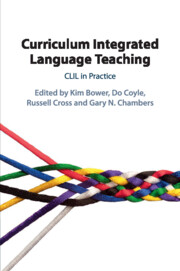73 results
Cuticular lipid profiles of selected species of cyclocephaline beetles (Melolonthidae, Cyclocephalini)
-
- Journal:
- Bulletin of Entomological Research / Volume 114 / Issue 1 / February 2024
- Published online by Cambridge University Press:
- 25 January 2024, pp. 124-133
-
- Article
- Export citation
Relationship between histopathological lesions and oxidative stress in mice infected with Angiostrongylus costaricensis
-
- Journal:
- Journal of Helminthology / Volume 97 / 2023
- Published online by Cambridge University Press:
- 13 January 2023, e5
-
- Article
- Export citation
Spontaneous Activities of Captive Performing Bottlenose Dolphins (Tursiops Truncatus)
-
- Journal:
- Animal Welfare / Volume 5 / Issue 4 / November 1996
- Published online by Cambridge University Press:
- 11 January 2023, pp. 373-389
-
- Article
- Export citation
Endoparasite community structure of an anuran assemblage in the Caatinga, Northeastern Neotropical Region
-
- Journal:
- Journal of Helminthology / Volume 96 / 2022
- Published online by Cambridge University Press:
- 28 October 2022, e78
-
- Article
-
- You have access
- HTML
- Export citation
Challenges and frontiers of computational modelling of biomolecular recognition
-
- Journal:
- QRB Discovery / Volume 3 / 2022
- Published online by Cambridge University Press:
- 19 August 2022, e13
- Print publication:
- 2022
-
- Article
-
- You have access
- Open access
- HTML
- Export citation
Effects of psilocybin-assisted therapy on treatment-resistant depression
-
- Journal:
- European Psychiatry / Volume 64 / Issue S1 / April 2021
- Published online by Cambridge University Press:
- 13 August 2021, pp. S693-S694
-
- Article
-
- You have access
- Open access
- Export citation
Physico-chemical and sensory interactions of arabica coffee genotypes in different water regimes
-
- Journal:
- The Journal of Agricultural Science / Volume 159 / Issue 1-2 / January 2021
- Published online by Cambridge University Press:
- 31 March 2021, pp. 50-58
-
- Article
- Export citation
Pathways to a more peaceful and sustainable world: The transformative power of children in families
-
- Journal:
- Development and Psychopathology / Volume 33 / Issue 2 / May 2021
- Published online by Cambridge University Press:
- 16 September 2020, pp. 409-420
-
- Article
- Export citation
Compulsory admissions of patients with mental disorders: State of the art on ethical and legislative aspects in 40 European countries
-
- Journal:
- European Psychiatry / Volume 63 / Issue 1 / 2020
- Published online by Cambridge University Press:
- 24 August 2020, e82
-
- Article
-
- You have access
- Open access
- HTML
- Export citation
Preface
-
- Book:
- Curriculum Integrated Language Teaching
- Published online:
- 27 July 2020
- Print publication:
- 09 July 2020, pp xvii-xix
-
- Chapter
- Export citation
Afterword
-
-
- Book:
- Curriculum Integrated Language Teaching
- Published online:
- 27 July 2020
- Print publication:
- 09 July 2020, pp 205-210
-
- Chapter
- Export citation
Index
-
- Book:
- Curriculum Integrated Language Teaching
- Published online:
- 27 July 2020
- Print publication:
- 09 July 2020, pp 211-213
-
- Chapter
- Export citation
Part I - The Educational Context for CLIL
-
- Book:
- Curriculum Integrated Language Teaching
- Published online:
- 27 July 2020
- Print publication:
- 09 July 2020, pp 1-60
-
- Chapter
- Export citation
Contents
-
- Book:
- Curriculum Integrated Language Teaching
- Published online:
- 27 July 2020
- Print publication:
- 09 July 2020, pp v-vi
-
- Chapter
- Export citation

Curriculum Integrated Language Teaching
- CLIL in Practice
-
- Published online:
- 27 July 2020
- Print publication:
- 09 July 2020
Part II - Current Aspects of Practice in CLIL
-
- Book:
- Curriculum Integrated Language Teaching
- Published online:
- 27 July 2020
- Print publication:
- 09 July 2020, pp 61-142
-
- Chapter
- Export citation
Contributors
-
- Book:
- Curriculum Integrated Language Teaching
- Published online:
- 27 July 2020
- Print publication:
- 09 July 2020, pp ix-x
-
- Chapter
- Export citation
Tables
-
- Book:
- Curriculum Integrated Language Teaching
- Published online:
- 27 July 2020
- Print publication:
- 09 July 2020, pp viii-viii
-
- Chapter
- Export citation
Figures
-
- Book:
- Curriculum Integrated Language Teaching
- Published online:
- 27 July 2020
- Print publication:
- 09 July 2020, pp vii-vii
-
- Chapter
- Export citation
Part III - New Knowledge and Future Directions
-
- Book:
- Curriculum Integrated Language Teaching
- Published online:
- 27 July 2020
- Print publication:
- 09 July 2020, pp 143-204
-
- Chapter
- Export citation



